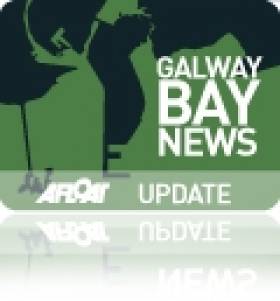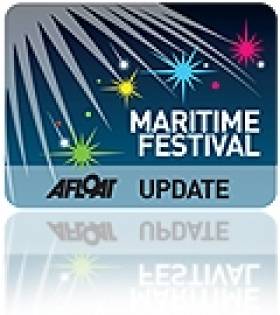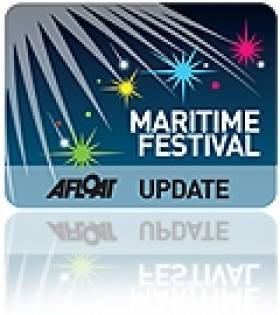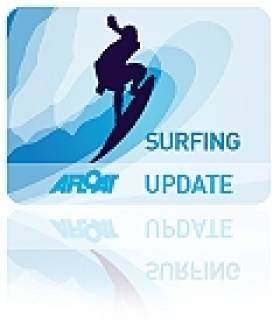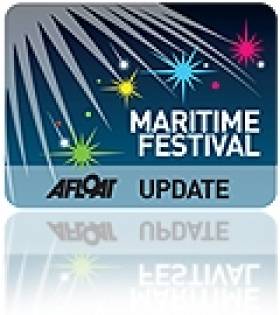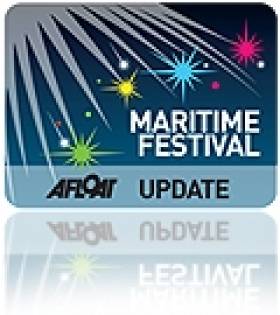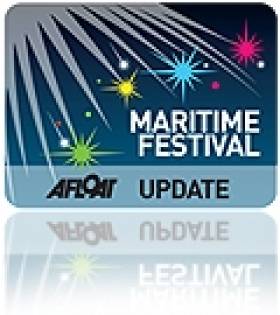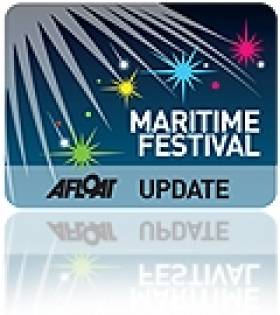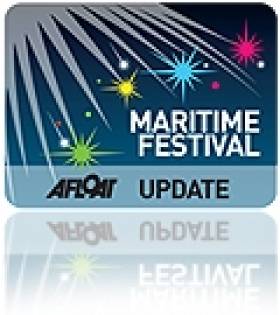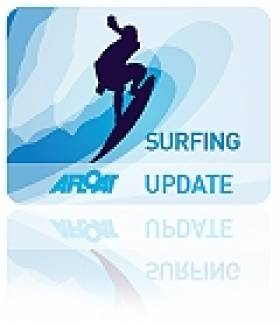Displaying items by tag: Maritime Festivals
Galway Bay 'Mackerel Festival' Proposed For Salthill Promenade
#GalwayBay - A new mackerel-themed maritime festival has been proposed for Galway Bay this autumn – as the latest industry figures show tourism in the region is heavily concentrated in the summer months.
The Connacht Tribune reports on the 'Mackerel Festival' idea suggested at a Galway Chamber meeting last week as a way to rejuvenate Salthill.
Along the lines of the recent Dublin Bay Prawn Festival, the event would liven up the seaside suburb's renowned Promenade with a celebration of its local mackerel catch, which brings in big numbers each September.
The event was one of a number of ideas, including reopening Salthill's tourist office, put forward at the meeting last Tuesday (21 April) that agreed to form a committee to advance the most promising plans.
And the news comes as the latest figures from Fáilte Ireland show that a third of all visitors to Galway in 2014 were 'shoehorned' into the two high summer months.
According to the Connacht Tribune, a combined total of 33% of Galway visitors arrived in July and August last year.
June and September are the next busiest months with 24% of all visits between them, as opposed to just 3% in January – underlining the highly seasonal nature of the region's tourism industry.
The figures were released as part of a public consultation on the Wild Atlantic Way and the initiative's effects on the coastal environment.
Dublin Bay Prawn Festival Gets Under Way
#MaritimeFestivals - The annual Dublin Bay Prawn Festival kicks off this evening (Friday 24 April) with the 'mystery dine-around', heralding a weekend of food and fun in Howth.
Whatever way you like your prawns – barbecued, whole, shelled, fried, skewered, marinated, sauced – Howth’s many award-winning restaurants will serve your favourite prawn dishes in bite-sized portions at the food village.
But around that focal point is a whole host of activities, including a funfair, live music and the vibrant village market.
Plus Howth's coastguard and lifeboat stations will be among the local institutions open on Saturday 25 and Sunday 26 April, educating on their invaluable water safety work.
#MaritimeFestivals - The inaugural Cliffs of Moher Seabirds Festival will take place from 9 to 14 May at the famous Clare coastal attraction and in other locations around the Burren and Cliffs of Moher Geopark.
Over 60,000 seabirds can be seen at the Cliffs of Moher during the breeding season, including puffins, guillemots, razorbills, kittiwake and fulmar nesting a different levels of the cliffs.
The cliffs are a Special Protected Area for seabirds and are also home to other bird species such as peregrine falcons, choughs and ravens.
There is nowhere else on the mainland of Ireland where you can so easily see such a host of nesting seabirds from accessible viewing points on the grounds of the Cliffs of Moher Visitor Experience or from the boat of the Cliffs of Moher cruises from Doolin.
The Cliffs of Moher Seabirds Festival aims to celebrate the presence of "our feathered fishy friends" with a programme of family-friendly activities including 'seabird bingo', guided birdwatching and flight demonstrations.
More details can be found HERE on the latest addition to Ireland's maritime festivals.
Upcoming Festivals Show What's Up With Irish Surfing
#Surfing - The biggest cash prize in Irish surfing will be up for grabs again this summer at the Sea Sessions Surf and Music Festival.
As JOE.ie reports, the Expressions Session is set to attract the biggest surfing names in Europe and beyond to Bundoran from 19-21 June for the €3,500 purse claimed last year by 17-year-old GearOid McDaid.
But you won't have to wait that long for the next surfing celebration in Ireland, as the popular Shore Shots film festival returns to the Light House Cinema in Smithfield on 11-12 April.
This year's events includes a live talk hosted by Banter that aims to ask the question: 'What's the story with Irish surfing?'
Big wave luminaries such as Peter Conroy of the Irish Tow Surf Rescue Club, MagicSeaweed editor Ed Temperley and Brian Britton of the legendary Donegal surfing clan will be on hand to discuss what makes Ireland such a strong destination for surfing.
Jim Carroll's On The Record blog has more on the story HERE.
#MaritimeFestivals - This weekend's Bray Air Display will feature three vintage aircraft – a 1936 Aer Lingus Iolar and two Chipmunk trainer planes - that have never flown together at an air show, according to The Irish Times.
The news marks the latest in a series of firsts for the three-hour display that's already scheduled to see the Hunter, the Sabre, the Yaks and the Vampires display teams make their Bray aerial debut at Ireland's largest free air show.
But don't worry if you can't make it to the Co Wicklow seaside town in person, as the event will be webcast live through AerTV.ie from 3.30pm this Sunday 20 July.
#MaritimeFestivals - If you’re looking for a buzzing destination to spend the August bank holiday weekend, consider Clare Island in Co Mayo for the first Raft Building Championships, which promises seaside festival fun for all ages.
The organisers at Clare Island Adventures are challenging towns, villages, islands, companies and rival sports clubs to put together teams of four to six people to build a raft, then take one another around a 300-metre course in Clew Bay in what's expected to be a barrel of laughs for both spectators and participants alike.
Clare Island Adventures will provide all safety gear and raft-building materials. All you need to do is show up in a swimsuit with a can-do attitude and a determination to complete the course.
Prizes will be awarded to the top three places, as well as for the best dressed team – so the team theme is just as important as how you perform on the course!
Back on dry land, meanwhile, the music will be pumping and the barbecue will be smoking (weather permitting, of course).
Heats will take place on Sunday morning with the final taking place in the afternoon at approximately 4.30pm, allowing time for teams and spectators to get the ferry back to the mainland if they’re not staying on the island for the night.
To encourage you to make a weekend out of it, there’s an all-in deal on offer of two nights B&B in the hostel, return ferry and raft-building entry for €74 per person.
Families looking for entertainment for the whole weekend are also encouraged to come a day early with a family fun day taking place on the Blue Flag beach on Saturday afternoon. Kayaking, snorkelling and beach games will all be on offer.
Those planning to visit the island for the bank holiday, or any time in July or August, will also be interested to know that there is a new shuttle bus service operating between Westport and Roonagh five days a week.
The bus departs from Westport Adventure Hub on James Street, where tickets for bus and ferry can be purchased together. Buses leave Westport at 10.15am and Roonagh at 5.15pm.
For more information on the Raft Building Championships check out www.clareislandadventures.ie. To enter a team (the entry fee is €60 per team), contact 087 346 7713 or [email protected].
#WexfordMaritimeFestival –As the Wexford Maritime Festivals (27-20 June) gets underway tomorrow, the festival has many events lined-up for all to enjoy until this Sunday.
As reported on Afloat.ie, one of the largest such festivals now in its third year since its foundation in 2012 which is to honour the memory of the founder the US Navy Commodore John Barry in his hometown of Wexford – known in the U.S. as 'Father of the American Navy.
The festival attracts tens of thousands of visitors each year and this year's festival programme is certainly a treat! Among the many events taking place are those directly to do with all things nautical, for more visit Maritime Activities.
Among the lead-in events of the festival is the Maritime Heritage Week where tonight there is a talk at 8pm about the "Kerlogue" a general cargoship to be presented by Pat Sweeney. The emphasis of the talk will be the heroic rescue of German sailors by the cargoship following a battle at sea with the British Royal Navy in the Bay of Biscay during December 1943.
For much more details of 'all' events during the three-day festival visit the homepage here.
Hop Onto the 'Hopper' at the Irish Maritime Festival
#IrishMaritimeFestival– In addition to all those tallship's at the Irish Martime Festival (13,14,15 June) in Drogheda Port, another classic vessel, 'Hebble Sand' a grab-hopper dredger built in 1963 will be open to the public.
The 757 tonne veteran at more than half a century old, has had a long and colourful working history. She is still operating having worked for more than five decades throughout Irish and UK ports. As previously reported on Afloat.ie, she is finishing a dredging campaign in Drogheda Port just in time to join the spectacle of tallships vessels on view to the public.
Access to the public of Hebble Sand, will give a real feel for a working ship and that of the operational side of port related activity. She is one of the last dredgers of its type and age, having been built in 1963 from Richard (Shipbuilders) of Lowestoft.
She was sold to Abco Marine in 2012 following her sale by Dublin Port Company, though her career in recent years had been with Dundalk Port. Almost two years ago she made her first voyage since her sale from the capital bound for the Mull of Kintyre.
#TallShipsDublin2014 – It's that time of year again, as the second Dublin Port 'Riverfest' gets underway over this June Bank Holiday weekend (31 May-2 June), and already in port are a flotilla of almost ten tallships lining the Liffey quays, writes Jehan Ashmore.
The host organisers of the riverside, sailing and maritime festival, Dublin Port Company welcomed a majestic array of tallships that arrived from noon onwards today to berth along the capitals historic North Wall Quay.
One of the visiting vessels is the 100 year-old Ruth, which had been at anchorage in Killiney Bay, off Sorrento Point in Dalkey, having sailed from Milford Docks in Pembrokeshire. She is operated by First Rate Sail, a family-run sailing holiday business based in Penzance, Cornwall.
The Swedish built gaff-rigged schooner traded in the Baltic Sea and these days she offers sailing voyages in Irish waters, Cornwall, Isle of Scilly, Brittany and Seine Bay off Normandy.
As previously reported the Riverfest festival programme will include the tallships, among them our very own the Jeanie Johnston, the replica barque will be open free of charge.
The River Liffey will take centre stage, as the three day festival is expected to be one of the biggest family-friendly events this weekend, attracting thousands of Dubliners and visitors to enjoy a wide range of quayside seafaring events and activities.
Two pirate ships featuring pirate re-enactments will be held, while Dublin Port will put on a show of their own with tug boat "dance" demonstrations performed by sisters Beaufort and Shackleton. Watch the skill of the tug-boat crew's within the confines of the Liffey.
In addition to river kayaking and most importantly is the sailing spectacle which is to culminate in a 'Parade of Sail' on Monday.
Fingers crossed that the winds will pick up in Dublin Bay to fill those white canvas sails while we bid them fare sailing!
#Surfing - Organisers of the 2014 Sea Sessions Surf and Music Festival have just announced details of their programme for 27-29 June.
Joining a number of top music acts will be some of the best competitors on the international circuit for Ireland’s 'biggest beach party of the year', which proved a big draw to the Donegal surfing hotspot last year.
The Sea Sessions Expression Session is returning in 2014 with the cream of European performance surfing taking on the best in Ireland.
The event format as usual is 'best move/air' and is organised in a way to allow the surfers to express themselves and push their performance.
“It is a really spectator-friendly format”, said organiser Pete Craig. “Most surf events are quote technical and not really that engaging for non-surfers. This unique format allows for and encourages explosive surfing that everyone can get.”
The competitors will hail from places such as France, Spain, Portugal, the Caribbean, the UK and Ireland.
William Alotti (Saint Martin) is returning to defend his title and is an early favourite. Toby Donachie (UK), who was one of the standout performers last year with some huge boosts, is also returning to challenge Alotti for a total prize pot of €3000.
Noah Lane (AUS) was the dark horse of the event last year, and after having settled in Bundoran, he may have some local knowledge that could aid him this year.
New for 2014 is the Malin Waters Fish Challenge, which will see a selection of local surfers and traveling pros attack the waves in some old-school shapes that have been selected for the event.
On the music side, top international talent will be joining the crème de la crème of Irish acts this year at Sea Sessions with Kelis, The Strypes and The Dandy Warhols all set to perform in Bundoran.
The full music line-up and festive activities can be found at www.SeaSessions.com.


























